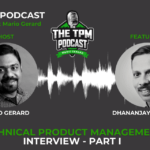Last updated on August 15th, 2024 at 12:12 pm
As TPMs, use the authority that comes with our role. At other times, we indirectly use the authority of the leadership team we represent. This is how TPMs generally influence people or teams at the ground level. However, the more we operate outside of our teams, as with external stakeholders for example, the harder it gets to influence people. The most successful TPMs operating at scale are experts in program management, technically astute, and possess the ability to influence people who do not directly report to them. This is called ‘Influencing without Authority.
Our goal here is to give you actionable insights and tips on how to “Influence Without Authority”, walk you through some common challenges that may occur, and offer solutions on how you can improve this skill.
What is Influencing without Authority?
You are tasked with leading a project within your organization but in an unofficial capacity where you’ve been given some responsibilities in creating a schedule and coordinating a team. So long as everyone follows your lead, you should be fine, right? Not exactly.
While your co-workers might not intentionally be trying to thwart your success, their priorities will naturally align with those who hold authority and their jobs—their supervisors. Without a position of authority, your priorities are likely to take a back seat to everything else on your team’s plate.
Does this sound familiar? This is where ‘Influencing without Authority’ would come in, in order to win those team members whose support is needed for the success of your project. You will need to examine what your goals are, who would be able to best help you accomplish those goals and what would motivate them to come on board with what you are doing.
Why is this Skill Important for TPMs?
As a Technical Program Manager, you are like the director of a movie. The director is not responsible for writing the story, or composing the music, or paying the salary for the artists. Yet, the director needs to bring all these stakeholders together to create the movie. Likewise, a TPM is not the one defining or designing the product; they are not the ones coding or testing it. Rather, the TPMs are the ones who bring the teams together and work with them to execute the vision of the product.
So can a Movie Director be compared to a TPM? Not so fast. There is one BIG difference between the two. Movie directors usually hold authority over their artists, whereas a TPM has little to no formal authority over the stakeholders that they’re leading. Being able to influence everyone simultaneously without the benefit of formal authority is not an easy task, but a necessary one in order to drive outcomes for your programs.
When Leading without Formal Authority – The Challenges
Challenge #1: Building Relationships with Your Stakeholders
As Guy Kawasaki says “If a person does not have a deep relationship with people, he/she does not have much influence over them”.
TPMs are often so focused on their own functional silos that they don’t have a chance to network or build professional relationships beyond their internal group, which should ideally be included in their networking and coalition-building efforts. Moreover, TPMs experience intense pressure to prioritize managing and executing responsibilities over building relationships.
Challenge #2: Building Relationships in a Virtual Environment
Given the new normal we are all maneuvering post-pandemic, TPMs have gained added complexities to their networking and relationship-building efforts because of the virtual environment at work. The challenge of building relationships when everyone is at home and meeting through video conferencing is at least 10 times more difficult to navigate.
Challenge #3 – Influencing People Outside Your Organization
Getting cooperation, compliance, motivation, and momentum from cohorts outside your reporting structure is challenging. But it’s even more challenging to get cooperation from members outside your organization.
Challenge #4 – Influence People who are in Levels Above You
Your influence does not apply only to your peers. To develop a good working partnership, being able to influence your boss and superiors is vital. When you have a chance to interact with a Senior Executive, you will often get only a few minutes to make those minutes count.
Challenge #5 – Influencing a Team as a Whole
The biggest challenge that you will face is inspiring your team when kicking off a new program. At times, they also need to be able to nudge the team in a particular direction.
Effective Tactics to Influence Without Authority
We have discussed a few key challenges you may have to face as a TPM. The following are suggestions to up your leadership skills and become more adept at influencing those around you.
These do not come with a guarantee. However, they are intended to improve your odds of successfully reaching your goals.
1. Build Those Relationships
Regardless of job title, an effective leader is someone who understands that relationships can be a powerful tool for influencing. Cultivate a broad network of relationships with the people inside and outside your company whose support you need to carry out your initiatives. Set up those 1:1s, coffee chats or a casual meet-up when time permits. If networking doesn’t come naturally to you, create a personal discipline through which you can acquire this capability.
Taking the time to truly get to know the people you work with can mean the difference between a potential ally who wants to help you succeed and someone who is indifferent to your success or failure.
2. Establish Yourself as an SME among Your Peers and Management
If you want to influence others in your organization and motivate them to listen to you, one of the surest methods is to develop expertise in your focus area. Doing so will allow you to position yourself as an authority and as a valuable resource. Using your expertise to back up your recommendations, plans, or projects can lend an air of authority and convince others you really do know what you’re talking about.
3. Exchanging Currencies
Exchanging currencies refers to finding out what other people value, and what you can offer in exchange for what you need. Influence is a form of exchange, so you must identify the currencies – the valuable resources you can swap in exchange for cooperation from others.
Simple gestures such as giving a peer recognition to someone who has gone out of their way to support you, an email of appreciation cc’ing their manager or good feedback during a performance appraisal can go a long way in paying them back for the support you have received.
4. Constructive Persuasion and Negotiation
People feel more valued when they have a say in the matter. So never go up to a team lead and ask them for a status update or commitment on a project, without showing them the big picture. Establish relationships by communicating and getting their input. Explain the purpose behind why something is important to the team. This is where the correct use of persuasion and negotiation comes in. When people feel communicated and they understand the bigger picture, there is a greater likelihood they will want to contribute.
Identify Your Style of Influence
Another important facet of influence is how you operate as an individual. It’s important for us to understand our natural bent when influencing people. Below are key questions to ask yourself in discovering your influence style:
- Rationalizing: Do you use logic, facts, and reasoning to present your ideas? Do you leverage your facts, logic, expertise, and experience to persuade others?
- Asserting: Do you rely on your personal confidence, rules, law, and authority to influence others? Do you insist that your ideas are heard and considered, even when others disagree? Do you challenge the ideas of others when they don’t agree with yours? Do you debate with or pressure others to get them to see your point of view?
- Negotiating: Do you seek compromises and make concessions to reach an outcome that satisfies your greater interest? Do you make tradeoffs and exchanges in order to meet your larger interests? If necessary, will you delay the discussion until a more opportune time?
- Inspiring: Do you encourage others toward your position by communicating a sense of shared mission and exciting possibility? Do you use inspirational appeals, stories, and metaphors to encourage a shared sense of purpose?
- Bridging: Do you attempt to influence outcomes by uniting or connecting with others? Do you rely on reciprocity, engaging superior support, consultation, building coalitions, and using personal relationships to get people to agree with your position?
Vital Behaviors to Cultivate Influence
To be in a position of influence, one has to have the following vital behaviors, which are essential in engagement:
- Focus & Clarity: The most important thing when you are trying to influence people or a decision is to be incredibly precise about what your vision is and what you are trying to achieve as a TPM. You will need to be able to emphasize why this vision is essential and is of value to your organization and your end customers.
- Build Trust: Building a relationship also involves building trust, which in turn will help you when you need to influence people. Trust is required for practical problem solving, collaboration, and dispute resolution, and in order to build trust in these types of situations, it is important to start with an open mind. An open mind helps you connect with others. Also, to build trust, one needs to admit faults quickly and emphatically, credit others for their work, and engage with empathy. While trying to have open and honest dialogues, being considerate, authentic and transparent is key.
- Connect on Commonalities: Keep coming back to the vision and the common goals that you and the person you are trying to influence have. This is important because though you might disagree on the method or timing of the execution of a plan, you will need to agree that X needs to be done. Finding common points of agreement, rather than focusing on the areas of disagreement, can be a huge win in the long run.
- Understand and Connect with Others’ Core Desires: As a TPM, you will need to grasp the core desires of all your stakeholders. This is critical as each of your stakeholders may have a core desire that is different from your program’s core vision. And this is normal. It’s on you to understand their core desire and ensure it’s brought into the strategy of the program you are running if it is the right thing to do. Influencing others is a matter of discerning what they truly want and offering to them a mutually beneficial outcome.
- Multiplier Effect: When dealing with teams outside your sphere of influence, TPMs need to find the most influential people & the key decision-makers, and bring them the vision with clarity and empathize with their concerns and feedback.
- Magnify Progress: As TPMs, it’s our responsibility to give credit where it is due. It is you who needs to give people and teams a pat on their back and also let your senior leadership know of the progress that they are making.
Conclusion
To sum it up, influencing is a skill that you should work on if you are in a leadership position at any level. Again, by “leadership position”, we refer to a managerial responsibility without necessarily having the authoritative power.
As Anne Morris rightly put in one of her talks, “informal authority often gets rewarded with formal authority”. You start to lead and as you become more and more successful in leading you to move up in an organization.
So don’t hesitate to spend the extra time and effort to work through the challenges and sharpen the skills needed in building influence.
Resources
- Exerting Influence Without Authority by Lauren Keller Johnson (Harvard Business Review)
- Influence without authority by Allan R. Cohen and David L. Bradford
- How To Influence Without Authority In The Workplace by Kelsey Miller
- How to Influence Decision Makers by Marshall Goldsmith (Harvard Business Review)
- 5 tips when influencing executives by Dr. Heather Johnson
Ready for your next career adventure?
Get personalized advice from Mario to confidently choose the roles, companies, and skills that shape your future!
Authors

Mario Gerard
I am a Principal Technical Program Manager (TPM) and have been in the tech industry for over 14 years.

Radhakrishnan Chandrasekaran
Experienced Senior Program Manager with a history of working in the automotive connected car industry.


















Insightful article on a very common challenge PMs are facing. I believe it is fair to sustain that TPMs have an additional leverage in building the trust / establishing themselves as SMEs / … as their technical background enables a common vocabulary with their teams.
As an opening to this article it could be justified to highlight the types of organisations where such challenges are naturally developing (e.g. functional organisation vs projectized organisation, weak matrix vs strong matrix).
Great read,
Mihai
Always a pleasure to read these tips from you, Mario. Thanks so much !